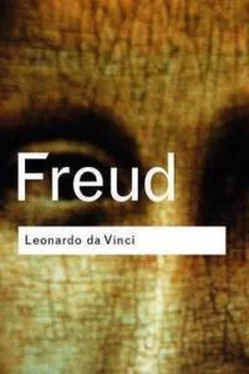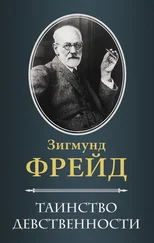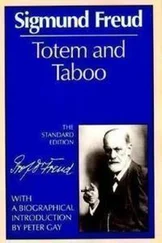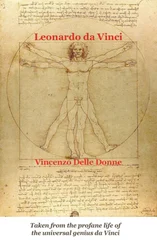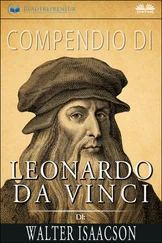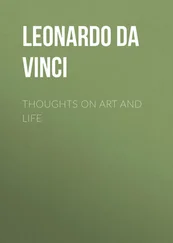Vasari mentions as Leonardo's first artistic endeavors, "heads of women who laugh." [57] Scognamiglio, l. c. p. 32.
The passage, which is beyond suspicion, as it is not meant to prove anything, reads more precisely as follows: [58] L. Schorn, Bd. III, 1843, p. 6.
"He formed in his youth some laughing feminine heads out of lime, which have been reproduced in plaster, and some heads of children, which were as beautiful as if modeled by the hands of a master…."
Thus we discover that his practice of art began with the representation of two kinds of objects, which would perforce remind us of the two kinds of sexual objects which we have inferred from the analysis of his vulture phantasy. If the beautiful children's heads were reproductions of his own childish person, then the laughing women were nothing else but reproductions of Caterina, his mother, and we are beginning to have an inkling of the possibility that his mother possessed that mysterious smile which he lost, and which fascinated him so much when he found it again in the Florentine lady. [59] The same is assumed by Merejkowski, who imagined a childhood for Leonardo which deviates in the essential points from ours, drawn from the results of the vulture phantasy. But if Leonardo himself had displayed this smile, tradition hardly would have failed to report to us this coincidence.
SAINT ANNE
The painting of Leonardo which in point of time stands nearest to the Monna Lisa is the so–called Saint Anne of the Louvre, representing Saint Anne, Mary and the Christ child. It shows the Leonardesque smile most beautifully portrayed in the two feminine heads. It is impossible to find out how much earlier or later than the portrait of Monna Lisa Leonardo began to paint this picture. As both works extended over years, we may well assume that they occupied the master simultaneously. But it would best harmonize with our expectation if precisely the absorption in the features of Monna Lisa would have instigated Leonardo to form the composition of Saint Anne from his phantasy. For if the smile of Gioconda had conjured up in him the memory of his mother, we would naturally understand that he was first urged to produce a glorification of motherhood, and to give back to her the smile he found in that prominent lady. We may thus allow our interest to glide over from the portrait of Monna Lisa to this other hardly less beautiful picture, now also in the Louvre.
Saint Anne with the daughter and grandchild is a subject seldom treated in the Italian art of painting; at all events Leonardo's representation differs widely from all that is otherwise known. Muther states: [60] l. c. p. 309.
"Some masters like Hans Fries, the older Holbein, and Girolamo dei Libri, made Anne sit near Mary and placed the child between the two. Others like Jakob Cornelicz in his Berlin pictures, represented Saint Anne as holding in her arm the small figure of Mary upon which sits the still smaller figure of the Christ child." In Leonardo's picture Mary sits on her mother's lap, bent forward and is stretching out both arms after the boy who plays with a little lamb, and must have slightly maltreated it. The grandmother has one of her unconcealed arms propped on her hip and looks down on both with a blissful smile. The grouping is certainly not quite unconstrained. But the smile which is playing on the lips of both women, although unmistakably the same as in the picture of Monna Lisa, has lost its sinister and mysterious character; it expresses a calm blissfulness. [61] A. Konstantinowa, l. c., says: "Mary looks tenderly down on her beloved child with a smile that recalls the mysterious expression of la Gioconda." Elsewhere speaking of Mary she says: "The smile of Gioconda floats upon her features."
On becoming somewhat engrossed in this picture it suddenly dawns upon the spectator that only Leonardo could have painted this picture, as only he could have formed the vulture phantasy. This picture contains the synthesis of the history of Leonardo's childhood, the details of which are explainable by the most intimate impressions of his life. In his father's home he found not only the kind step–mother Donna Albiera, but also the grandmother, his father's mother, Monna Lucia, who we will assume was not less tender to him than grandmothers are wont to be. This circumstance must have furnished him with the facts for the representation of a childhood guarded by a mother and grandmother. Another striking feature of the picture assumes still greater significance. Saint Anne, the mother of Mary and the grandmother of the boy who must have been a matron, is formed here perhaps somewhat more mature and more serious than Saint Mary, but still as a young woman of unfaded beauty. As a matter of fact Leonardo gave the boy two mothers, the one who stretched out her arms after him and another who is seen in the background, both are represented with the blissful smile of maternal happiness. This peculiarity of the picture has not failed to excite the wonder of the authors. Muther, for instance, believes that Leonardo could not bring himself to paint old age, folds and wrinkles, and therefore formed also Anne as a woman of radiant beauty. Whether one can be satisfied with this explanation is a question. Other writers have taken occasion to deny generally the sameness of age of mother and daughter. [62] Cf. v. Seidlitz, l. c. Bd. II, p. 274.
However, Muther's tentative explanation is sufficient proof for the fact that the impression of Saint Anne's youthful appearance was furnished by the picture and is not an imagination produced by a tendency.
Leonardo's childhood was precisely as remarkable as this picture. He has had two mothers, the first his true mother, Caterina, from whom he was torn away between the age of three and five years, and a young tender step–mother, Donna Albiera, his father's wife. By connecting this fact of his childhood with the one mentioned above and condensing them into a uniform fusion, the composition of Saint Anne, Mary and the Child, formed itself in him. The maternal form further away from the boy designated as grandmother, corresponds in appearance and in spatial relation to the boy, with the real first mother, Caterina. With the blissful smile of Saint Anne the artist actually disavowed and concealed the envy which the unfortunate mother felt when she was forced to give up her son to her more aristocratic rival, as once before her lover.
Our feeling that the smile of Monna Lisa del Gioconda awakened in the man the memory of the mother of his first years of childhood would thus be confirmed from another work of Leonardo. Following the production of Monna Lisa, Italian artists depicted in Madonnas and prominent ladies the humble dipping of the head and the peculiar blissful smile of the poor peasant girl Caterina, who brought to the world the noble son who was destined to paint, investigate, and suffer.
When Leonardo succeeded in reproducing in the face of Monna Lisa the double sense comprised in this smile, namely, the promise of unlimited tenderness, and sinister threat (in the words of Pater), he remained true even in this to the content of his earliest reminiscence. For the love of the mother became his destiny, it determined his fate and the privations which were in store for him. The impetuosity of the caressing to which the vulture phantasy points was only too natural. The poor forsaken mother had to give vent through mother's love to all her memories of love enjoyed as well as to all her yearnings for more affection; she was forced to it, not only in order to compensate herself for not having a husband, but also the child for not having a father who wanted to love it. In the manner of all ungratified mothers she thus took her little son in place of her husband, and robbed him of a part of his virility by the too early maturing of his eroticism. The love of the mother for the suckling whom she nourishes and cares for is something far deeper reaching than her later affection for the growing child. It is of the nature of a fully gratified love affair, which fulfills not only all the psychic wishes but also all physical needs, and when it represents one of the forms of happiness attainable by man it is due, in no little measure, to the possibility of gratifying without reproach also wish feelings which were long repressed and designated as perverse. [63] Cf. Three Contributions to the Theory of Sex, translated by A. A. Brill, 2nd edition, 1916, Monograph series.
Even in the happiest recent marriage the father feels that his child, especially the little boy has become his rival, and this gives origin to an antagonism against the favorite one which is deeply rooted in the unconscious.
Читать дальше
